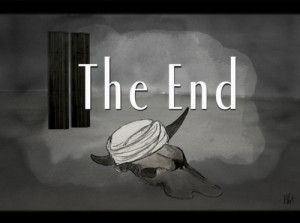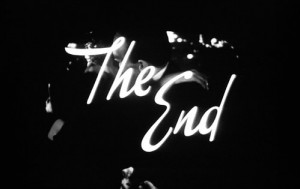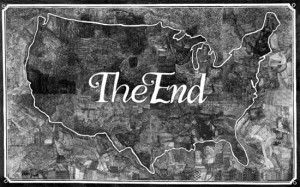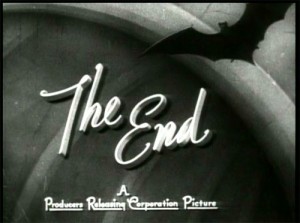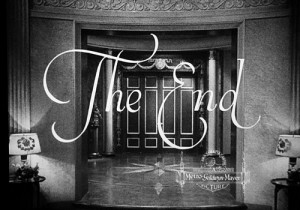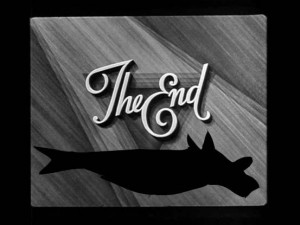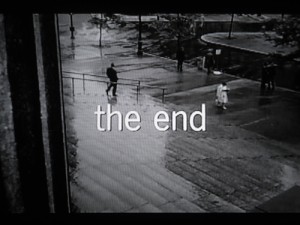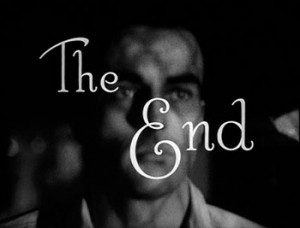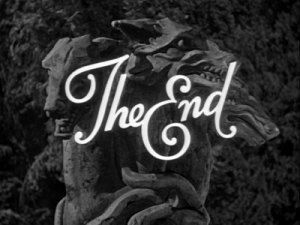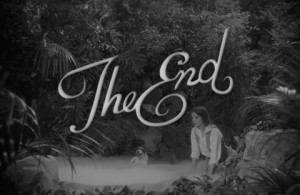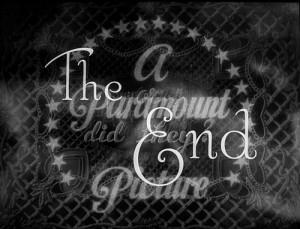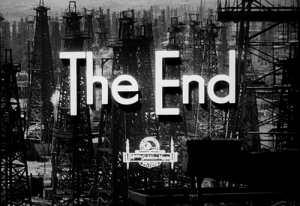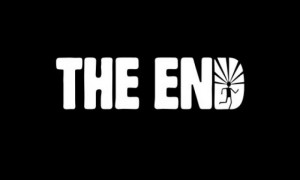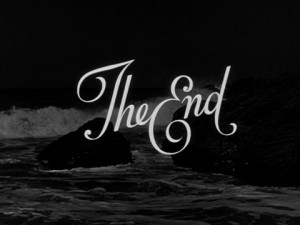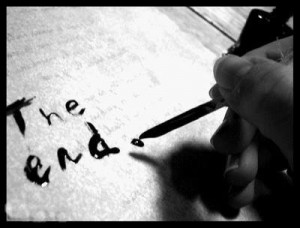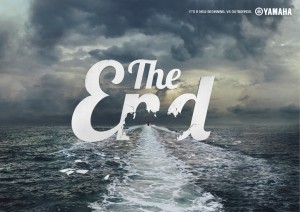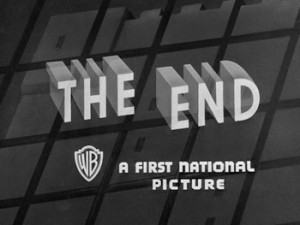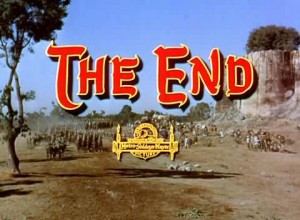
Action Figure Re-mix: an interview with Mike Hoolboom by Nadia Tan and Olga Barsky (January 2007)
NT+OB: How did you enter the world of filmmaking and what drew you to the medium?
MH: I thought the quest for origins was a male concern, propelled by the obscure moment of conception, not lived in the body, but expelled, released from memory. Why did I want to make movies? Because I wanted to stop time. Time is at last made material in the movie medium, those once upon a time plastic strips, cut together, produced a temporal flow, and at the beginning it was as simple as that. I was content to watch the metronome beat faster or slower. What might be going on in that time? That was a secondary impulse, it took a while, some years in fact, before it occurred to me that something needed to occupy the frame. An infantile wish: if only time could be stopped, or better yet repeated. If only an experience could be returned to and sharpened up, if that nightcap farewell, the witty rejoinder, the small moment at the check-out counter, if only those could have some additional magic sprinkled over it. Movies suggested the possibility of time travel, that there could be a second chance. If time’s flow was not inexorably forward, then it might be reversed, and a reversal of fortunes enacted. To the infantile wish to sit in the dark, to look without responsibility, is added this second desire: to do it again, knowing the outcome in advance.
NT+OB: You work a lot with found footage. What is it about using pre-existing images that compels you? Can you talk about the difference in process between working with found footage and creating your own images?
MH: When I look out the window am I seeing something I’ve made, or a city skyline that developers have produced for profit? And if I raise a lens to that scene, waiting for me, for anyone at all, does that become “my” picture, “my” skyline, “my” city? Isn’t there a sense in which the view out my window is already found footage, arranged and inhabited by others?
For the past seven years or so I’ve worked on a series of biographies, of my friend Tom (2000), my nephew Jack (in Imitations of Life (2003), seven stars (Philip Glass, Madonna, Esma Moukhtar…) in Public Lighting (2004), and then the late video artist Colin Campbell in Fascination (2006). Perhaps it’s not a coincidence that this “period” coincides with my renewed enthusiasm for found footage. Though one of my earliest movies closed with a couple getting into a car and driving off with a full list of credits superimposed on them. The couple, their happy smiles, the title announcing “The End” and the credits for director and camera, all these were “found footage.”
There was already a concern that the signature effect act under erasure (as they (?) used to say) that this could be a movie made by anyone. When I worked at Canadian Filmmakers Distribution Centre I gathered a couple of movies by myself and others and gave them a fictitious author and waited to see what would happen. Which wasn’t much, as it turned out. Though the difference between a runaway hit and a movie sitting permanently on the shelf was not so distant.
What’s the necessary link between biography and stolen pictures? We are containers for pictures, they inhabit us, like language, like a virus. We see through them, they are covering our eyes, and provide a scrim through which our experience becomes visible. Oh, you’re so beautiful. That is an old man. I think I’m falling in love. How do I know? Because I’ve seen it in a movie, or rather: the movie has seen it in me. The pictures I’ve watched haven’t simply stayed up there on the screen, they’ve stared me down, each and every one. The audience is the proper subject of every movie, large or small.
Received wisdoms. Gravity. Chocolate tastes good. Movies are better than television. If there were only less of me. Am I getting in the way of an experience that is trying to make itself felt?
Here’s a missive from the always astute Robert Everett-Green, writing in The Globe and Mail (Jan. 27/07). “The ever-widening use of samples and loops, and the normalization of remixes and mashups, promotes an idea of the song as a porous, dynamic entity in a maelstrom of other songs. The audience for urban music is very conscious of song-building as an open process, and judges the quality of a song in part by the producer’s cleverness or audacity at bringing different elements together. Fans have begun to listen the way producers do, which is one reason why the studio term “track” has come into common use.
This kind of listening and method of song production, has spread far beyond the R&B/hip-hop scene in which it originated. Soon after Radiohead’s Thom Yorke released his solo album The Eraser , last year, he began featuring other people’s remixes of songs from the disc on his website, each for a short time only. The Barenaked Ladies sold the constituent tracks to individual songs from their recent disc, Barenaked Ladies Are Me , so that anyone with $2.49 could freely remix their stuff with anything. Such gestures impose a degree of temporality and interactivity on a medium—the album—that we used to think of as fixed. The Eraser is still an album, purchasable as plastic, but Yorke’s authorized re-mixes have given it a penumbra of second thoughts and annotations.”
I never said hello for the first time. I repeated my lines, and when I said them in the right way, at the appropriate moment, I was greeted by others doing just the same. “Hi, how are you?” It didn’t start from me, my mouth issues “found language,” “found phrases.” To catch wind of language’s viral strength we need look no further than the word “like.” Go ahead, walk around for a few hours and keep an ear cocked for it. Like like like. Out of the mouths of babes and oldsters and everyone in between. (Has primary experience become impossible, are we all living in a simulacrum of our lives, LIKE something else?)
Why found footage? Because the way I dress is the way everyone around me dresses. Because the way I push and pull words together is not so unfamiliar that I am misunderstood. I’m hungry. Why are you looking like that? Touch me. The globalized media I consume is widely available, it doesn’t stop at my door, in the face of these pictures my door is no longer a door. The pictures I am busy recombining try to show some of the consequences of this globalization. When I look deepest into the heart of my heart I see: someone has already been there.
N+OB: And just for fun… If Mike Hoolboom wasn’t a filmmaker he would be.
MH: Spreading his unhappiness as far and wide as possible. A writer perhaps, or does that amount to the same thing? I always wanted to be a painter but was convinced that I would make only beautiful, decorative confections, invariably abstract, the kind of things that make bankers wet, only mine would have some bloodied edge that would render purchase impossible, corporate or otherwise. I would specialize in angry decorative fluff. I imagined myself twenty or thirty years hence, still locked away in the same basement studio, mulling over whether the little orange square should sit next to the little blue square. How to get a grip when the world was so far away? Perhaps movies were a reasonable option after all, at least the camera had to be trained on something.
I am entirely unsuited for movies, they have refused me again and again, and yet I have persisted. Some are born to the task, they belong in the kingdom, but not me. Some are able to pick up cameras and everywhere they turn there is something interesting or beautiful or profound waiting on the other side of the lens. I used to envy them but no longer. Most have long ago run out of steam or ideas or are content to repeat themselves. Talent or having the knack or “a good eye” or sublime intelligence will rarely take an artist very far.
N+OB: If Mike Hoolboom was an action figure he would have.
MH: Wings. Who cares about having to squeeze into elevators or rooming house bathrooms? Once you’ve flown without the aid of airplanes or gliders there is no richer, more perfect sensation. Wings would make it so much easier.
When I was a child, and an avid consumer of comic books, the inside covers promised a world of gizmos and secret powers that I naturally attributed to adults. I felt certain that x-ray vision, overwhelming strength, and limbs that could become elastic enough to stretch around buildings and between cracks, were all waiting for me in adulthood. Disappointment, naturally enough, did not arrive all at once, but was spread, like a thin coat of peanut butter, over the years named as ‘adolescence.’ Movies promised an escape from all that too, the image or imagination that one could become someone else, or something else. Many of my early fringe movie experiences were serious encounters where people were not permitted. I tried, again and again, to make my way through Peter Gidal’s Theory of Structuralist and Materialist Film where he railed against the wanton use of people in movies. It was another kind of fascism, wrote Gidal, I am paraphrasing badly, as usual I remember little of what happened before this morning, and it was some years before I realized that the only films permitted by Gidal’s polemical gatekeeping were of course his own. But at the time I took it all very seriously, and my fave movies were those which featured snow banks or walls, or slowly moving (everything was slow then) cameras rubbing themselves up against a bit of landscape. The act of identification was similarly skewed: I was that tree, I became that pavement, and felt all the better for it. I was making an escape all right, just like those who were hunkered down in front of what I thought of as “people movies.” (I leave it to you to imagine the sneer, the dismissive tone). Oh, you like “people movies.”
NT+OB: Can you talk about the various phases/stages you went through as a filmmaker? What was your mindset when you began making films? Was there a transition or a turning point in your career? Do you feel like you have come a long way? Has there been a transformation?
MH: When I began making movies I wanted to avoid a life that hadn’t begun yet. It may have seemed that I was peering intently into animation cameras and editing loops, but what I was really doing was summoning up every bit of energy I had to avoid looking. I was as successful in this as my movies were unsuccessful. They were (do I even need to say it?) vague, gnomic, structureless mini-monuments to avoidance and not seeing. Of course, I was not alone in this. (My not-looking was hardly unique, I was surrounded by others who were similarly making movies, or paintings or books, about not-looking).
There used to be a modest, home-made, hundred seat movie theatre in the city’s east end, and that’s where I saw fringe movies. Twice a week, Wednesday and Friday nights. I sat along with a few others, all regulars, this was not the kind of place you wandered into by accident. Those attending were reliably silent, and the movies were difficult and obscure. They came from around world, but I had no sense that the things I made, or that anyone else around me was making, would ever show in any of those places. My movies would only be shown in this one theatre, for the same select few who came to everything else. Afterwards we would go to the Dominion Tavern and practice not talking to each other. We became pretty good at that too.
When I spoke with Mike Snow he related more or less the same story, only translated to New York (where even the smallest gesture is large, because it happens there). He would go to the co-op to see movies, mostly programmed by Jonas Mekas, and there would be a handful of scruffy regulars, except when Warhol would show his things. It is strange for me to see folks beginning to make movies today with dreams of showing “everywhere,” (which as they will quickly find out, is very close to nowhere, especially here in Canada). How much more pressure there is now, with the proliferation of film festivals, and what a luxury of access exists to movies large and small (there were no video stores then, no video on demand, no cel phones and no internet except in the Pentagon).
There have been various “periods” in my making, but they are more difficult to summarize. There was certainly an interest in first person docs or diary work, largely inspired by the example of Rick Hancox. To be able to create art out of the stuff of everyday living, to refashion the fear and inarticulate longings and unnamed desires into something beautiful and touching, that would really be something. I made several efforts in this genre and failed each time, though was heartened by the attempts of others, like Phil Hoffman for instance, who produced powerful, beautiful work under the same influence. For fringe movies in this country, the home movie genre is a large and abiding concern. What is Wavelength after all, but a home movie dressed up as conceptual art, or Patricia Gruben’s The Central Character or the window movies of David Rimmer?
Years later, the portrait of my nephew Jack takes up this lost thread. It is also a failure (too much talking, unfortunate music choices), but it has a hidden utility which may yet redeem its cloying sentimentality. Jack is experiencing a childhood which appears strikingly easy, perhaps it is because he is so easy going, and beautiful, and is a fine hockey player, in a kid culture where being a fine hockey player counts for a good deal. But there will come a time in his life when the road will not be so smooth, when there won’t seem to be any roads at all, and when that moment comes he may remember this movie, and watch it for the first time from beginning to end, and it may offer him a clue of where to turn. And who knows, there could be other Jacks waiting, though I am less concerned with this notion. Why not a movie made for one person?
Transitions and turning points. Truffaut insisted that a maker’s first movie lays down a template, that every making afterwards is a remaking, a return or echo of that originary experience. No doubt it is true for him, but he didn’t grow up fixated on the changing face of glam rock. David Bowie, for instance, turned his changeling status into mass commercial appeal, ziggy stardusting his way across personas. New records were typically accompanied with new clothes and colours and stylings, change was continuity. I imagined my movies the same way. On the one hand they would be fixed and immutable points, stars in the night sky, but also and importantly, part of the past. They were positions taken and then abandoned, and together they would charge a field. Identity could be postponed almost indefinitely via this strategy of aesthetic deferral. Perhaps strategy is too strong a word. Blundering across emulsion possibilities—how does that sound? At a smoky table too small for one at the Ann Arbor Film Festival Richard Kerr told me, “You’re the Neil Young of the avant-garde!” We still believed in the avant-garde then, passing this word between us along with black coffee and tequila. What he meant, I think, is that so many of my movies seemed to arrive from different directions. There were the formal studies like Grid (1989) which takes a solid structure and sets it into motion, or Scaling (1988) where I paint a wall black while a second me, superimposed in reverse motion, steadily unpaints it. But there were also a quartet of diary movies, entirely abstract outings (Bomen and Towards), meditations on cinema itself (The Big Show, Now,Yours, White Museum) and found footage reworkings. Where was the signature effect, the style that announced my personality as an artist? Years later I understood that this was only preliminary work, the way a runner unlimbers before a race. I was sketching, making inquiries into different fields, not in order to find out: is this me? Do I belong here? But instead to push and pull at the stuff of movies, and find out where it pushed back. These became areas that would be taken up with more seriousness as my second decade drew to a close. Much of the earlier work has been withdrawn from circulation.
Truffaut said that everyone remakes their first movie. I could go this far down the road with him: there is an unmistakable sensation which accompanies each making, which is nearly identical. Yes, this is it, this is the turning point for my work. After this Eureka moment, after this movie, all of my work will exist at another “level.” (I am still governed by these hopelessly outmoded spatial metaphors. I cling to the notion that in every activity there is the bottom and the top, that heaven (or a good ice cream, an excellent pair of pants, good sex, all of which is the same thing) exists “up there.”)
I am working on a movie now (Notes On Fascination) which is the one I’ve been waiting to make all my life. Or so I imagine now, right now. It feels different than everything else that has gone before it, slower and more sober, more thoughtful, filled with time to look and think.
For the first twenty years of my making I made movies, and cut plastic strips together. This offered me a nearly pornographic pleasure. Even if no one else understood why these fragments belonged together, the touch of celluloid was so very satisfying. It touched back, it spoke to me, often to me alone.
In the late 1990s I began making videos quite by accident. Accidents, of course, are central to any serious work. Cultivating accident is another one of those jobs that an artist takes on if they are any good at all. I was asked to take part in a residency at Charles Street Video. They would provide free facilities and an editor, and I could make whatever I wanted. Incredibly, I think I was also paid a modest sum.
In the first six months I made three short movies with three different editors and became hooked. The first was little more than video graffiti, scrolling text over a number of Madonna moments, assembled in a “linear edit system” which meant that every time a new decision was made, we had to go back and recut the whole thing. We must have output that video forty or fifty times. I loved working with an editor, being able to look over someone’s shoulder knowing nothing absolutely nothing about the technology. I was determined to stay dumb. I would avoid the material abyss of film, which I had walked into like any typical geek, in place of racing cars or stereo equipment I could nod about F stops or lenses. In the world of video I was concerned with something else: what did it mean? How did it flow? I stopped making my own pictures and used the abundance of what lay all around me. In film, pictures were precious and expensive. In video, pictures came by the kilo down at the local video store. And if you got tired of those there was another store just a few blocks away. Not to mention the internet. Not to mention sending away for libraries jam packed with obscure delicacies and treats. Where to begin?
Making movies meant being bent down under the strips of plastic, taped up across the walls, the edit machine, every possible surface was covered with remains and reminders. Small children shouting pick me. It was held in the hand, that was important, to feel the cut, the impression made when the look on that face ended, when the elbow turned, what it means to take another step. Even at this remove, surrounded by plastic sheaves containing serial pictures, there was something direct and embodied. Video ended all that. Not only were the pictures coded into a machine, inaccessible, subject to the pressing of buttons and the throwing of switches, but there was someone else doing the pressing. There was a third term, this is the important thing, video produced a triangle for me, between the work, the editor and myself, and this was crucial. The relations in film had been too direct, and this directness confused and confounded me, I needed the further mediation of an editor, in the same way that novelists turn to their editors to ease them out of their blind spots. Now I have returned to a solo practice, not in film, but in video, where I am trying to be my own triangle, to look into these pictures as if they were made or stitched together, by someone else. We’ll see what happens.
I began by describing a feeling common to all of my making. Yes, this is it, this is the turning point, the conversion moment. This is what I feel while making every movie. I am entirely seduced by it, taken in, the moment of drawing two disparate pictures together will produce a delirious outpouring of energy, a magnanimous field of engagement which will change the face of movies to come, or at least my face, at least today. This is how I feel each time out, and then after an hour, or a day, or several days, or sometimes several years, it is replaced by another feeling which says: there is nothing here of any value. It is the palest imitation of an imitation, banal, vague, without issue. And then, typically, I begin again, I work myself back up (there is that spatial metaphor again), trying to find the movie again, and this process may repeat itself many times. Most of the time this process ends with my throwing the work away. For this process I have been dubbed ‘prolific.’
But for now, for today, I am still in love with my movie. It is the mark I have been trying to make, or leave behind, these many years now. The herald of a new ‘period.’ Will anyone notice?
NT+OB: Does inspiration come freely or do you have to work hard for ideas? Have you suffered through dry spells or “filmmaker’s block” or do ideas constantly flow? Where does your inspiration come from?
MH: I don’t believe in writer’s block. Ideas are everywhere, already waiting, if only folks want to see, encounter, realize them. The crucial thing about ideas is that they don’t originate from the author. The author opens and ideas enter, that is the process I have experienced, over and again. The ideas rush in, and then the further smaller ideas about their realization (put the camera here, frame it like this, cut it in this way), all this arrives from a fine, clean place. But authors often get in the way of their ideas. They have, we have, personalities and egos, with preferences which obliterate the ideas which are trying to come through. It is the author’s job to let the ideas come through without making a tangled mess of it.
NT+OB: Why do you make films? Why do you tell the stories of people like Tom and Jack? Does it provide a personal catharsis… or do you feel these stories need to be told?
MH: I’ve already spoken about the motivation behind making the movie about my nephew. My friend Tom called me one night and talked about going dancing and doing a few drugs and it was late and he was feeling it and there in the dark corners with the pounding music he had sex with a man he met that night. Was the stranger wearing protection? It was just so hard to know exactly. Tom got tested and found out not only that he was HIV positive, but that his T cell count (the cells which the virus attaches itself to) was drastically low. He had already suffered from Parkinson’s for many years, and was “let go” from his legal temp job because his hands shook too much to use the keyboard with any speed. In short, his future looked dim and contriving an excuse to be around him, I asked how he would feel if I started making a movie about him. He replied with typical enthusiasm, and mentioned that two other movies were being planned, one by someone at the National Film Board! I guess the notion that Tom would make a good “subject” for a movie was in the air. Mine was the only one made, but I am still hopeful that someone else will take up the task, because my “biography” leaves almost everything out. I wasn’t interested in narrating facts, but in conjuring the feelings I get when I’m with Tom.
NT+OB: How does collaborating with other artists affect your creative process?
MH: Most of my collaborations haven’t worked, though I’m still trying. Steve Sanguedolce and I made Mexico (1992) and that went very well, in part because we were best friends, and because we shared a strange working method. In those days it was considered a good thing to go out and shoot with nothing on your mind. The exercise was a form of Zen opening, you would banish all thought and then take up the camera and start recording. In this way, the camera would record consciousness itself, or some nonsense like that. These brainless shootings would typically be followed by years of tortured editing sessions where these fleeting fragments would be forced together, granted shape by sheer dint of will. This shaping process was akin to trying to understand the deep structure of molecular physics, these disparate objects must have some necessary relation. What was it?
But the real reason our collaboration worked was because we were able to change speeds at the same time. I wasn’t able to do this with anyone else, the collaborations with others were hasty miniatures of no consequence.
Last winter I visited with my friend Fred who was fresh from another long stint at the monastery. Fred has an abiding interest in growing mold on super-8 film, he has produced hours of it, and while it is captivating to watch, any four or five seconds is stunning, it is without meaning or shape. It is all beautiful in exactly the same way. I proposed we work on a movie together, using some of this footage, and some I would provide, and slowly we have begun to pick away at a short missive called Fontage. It is very touching, with spare beautiful sounds, and a shattered, prismatic emulsion. We have established something like a main “character,” who appears mostly through superimposed texts (“The State: I love more than I am loved”). It is happening very slowly through the post (Fred lives in Amsterdam), he works up a version and sends it to me, I make suggestions and send them back. Presently he’s away on another meditation retreat, and I’ve burned a few more sounds to insert into the mix. With Fred, as with Steve, the crucial thing is that we are changing speeds, my tendency for high speed dismissals (to bring together the beginning and the end) is tempered by distance and Fred’s pace of patience. The work occurs with frequent breaks and bouts of reflection. This is important. Often the most important work is done when you’re not working.
NT+OB: What do you think of the term catharsis as applied to filmmaking? Do you believe in it? Is it relevant to you?
MH: While I have tried to be steadfast in my refusal of real life, emptied out so that I could become a receptacle for the admission of cinema, my efforts have not been entirely successful. Catharsis, as a result, has occurred not at the edit bench, or taping a subject, but instead in that other unrehearsed and uncontrolled place, the one without scripts or the possibility of return visits in order to smooth out the bumps.
Editing is an art of relationships, and there have been too many times to count when I stood, hovering with a piece of plastic in my hand, or with a newly digitized clip in the browser, and felt that the joining of two disparate moments, their marriage, their impossible juxtaposition, would release some new fount of energy which would usher in brave new worlds of thought. Or make certain old, ugly notions simply impossible. Preposterous to imagine that economic exploitation, or slavery, or imperialism, could be banished with an edit, but you have to start somewhere.
But wait, your question concerns catharsis. My OED says: “Cleansing (the bowels), promoting evacuation, purgative.” So what you’re asking is if I feel that my practice is like taking a shit? Or whether it provokes that feeling (in me, or in others). In other words, is media work a form of laxative? I am reminded of a scene from Godard/Mieville’s terrifying television program Paris/Tour/Retour/Deux/Enfants . Godard is interviewing a young boy, one of the two “main characters,” and they are discussing television. Of course, I have no real memory so I might be making all this up. Godard, provocative as always, says to the boy that when some program is lousy on tv, don’t you say that it is really shit? The boy giggles a little and says sure. And where does shit come from, he asks the boy. Shit comes from the asshole, so television is the ass.
A second image comes to mind, this time from the pages of VICE magazine. Some twentysomething ran an experiment, where he would eat only corn and photograph his shit every day, waiting to find out how long it would take before his shit looked like corn. I can’t remember the precise number of days, but his photo evidence left no doubt that the hoped for conversion was occurring.
I was going to write: but my work is not like TV, it is difficult and requires engagement, it is a specialty item (not so ‘common’ as shit). Perhaps my work is like corn after all, or at least, the corn in this experiment. Is that a good thing? You would have to see the photographs to know for sure.
After years of careful tendering, of pouring over the runes of the body like others might read a table, a table of contents, the Germans have devised a unique tool for the practice of philosophy. In order that it may be more fully a part of their every day, they have installed it in a room no home would be complete without. And located there an appliance inimical to our separation from our beastly forbears, whose protests continue to challenge the injustices of evolution. Their invention? The step toilet of course, an appliance unique to German understanding, and which they have utilized to lend to even the poorest of its population the means of study and introspection. This meditation would be practiced daily, ensuring a discipline of looking back, or looking again, at the body’s luxuriant growths.
Its application is simple. In the place of the watery abyss which awaits the remains of the rest of the world, they have introduced a porcelain shelf. This shelf would ensure that nothing would leave the body without the possibility of examination, lending our anus an eye, a musculature of reflection where we could ponder the body’s miraculous conversions. In the first days, the traveller imagines himself ill, because of the overpowering stench that accompanies evacuations. But as he looks down each day, confronted with the unmistakable, unbaptized evidence of his creation, he feels again the longing of a body for its own, a parental longing which seeks understanding through reproduction.
It’s what continues to anger Berliners when they travel abroad. After eating, their bodies begin the work, the long road of intestinal discovery. But in the end, they are denied a vision of their production. It has been buried in water, flushed away, joined in an indistinguishable throng with all the rest.
It is also a reminder of our own destination. It proclaims, “This is what you are! This, and no more!” This sobering mound which has travelled the length of our most intimate, our most carefully guarded secrets, has emerged to grant us a vision of ourselves, to recall for us all that the body is also food, needs also surrender to a greater appetite, and so return to the toilet of the world.
NT+OB: Can you briefly describe the difference between working with fictional narratives and found footage montage?
MH: Here is a text fragment I found from an unpublished novel, and the paragraph which arrived after searching for the word toilet: She had found Alex necking with her best friend after she left them to go to the toilet and came back to get her purse. How embarrassing. But not as embarrassing as the letters she found a month later. They contained all the words she hoped he’d tell her and all the ones he already had, inked in tidy fountain pen script and delivered exactly once a week while she was ploughing through Egyptian dental records in her Anthopology seminar where she turned the same silver engagement ring he’d given her over and over worried that if she had one quarter pounder too many her fingers would blow up like balloons and her ring finger would have to be amputated. She worked it off with a squirt of dish detergent, pawned it for half of what it was worth so she would never have to look at the goddam thing again and started following Mr. Conners. That was her old math teacher’s name: Connors. After two week he knocked on her car window while she was sleeping a block away from his house. “Can I come in?” She let him into the car and he sat down in the passenger seat and closed the door. They didn’t say a word to each other, what was she going to say? He looked at her a long time and she looked at her shoes. She thought this is not my foot. My leg. My arm. When she got to her head she heard the door opening and looked up as he was leaving. It was the last time she ever saw him.
NT+OB: Assuming all of your films existed only as a single copy, which of them would you save from a burning building if you could only save one?
MH: Several of my movies exist only as single copies, and I can’t help but notice, when I visit them on occasion at the distributor, that they squat on shelves along with many others, next to a row of windows, with the sun beating down on them incessantly, which hastens the aging process, turning the colour to a uniform pink haze and weakening the emulsion. In other words, by sitting in poor conditions they are being destroyed. I have refused the simple step of removing my movies and putting them in a cool, dry place, or placing them in an archive. They are slowly dying, and soon there will be nothing left of them. No need to imagine a fire, the fire is already happening, and has been happening for years.
I remember a Stan Brakhage screening around 1989. He was excited because he had finished a hand-painted movie which he had worked on for many years, and which would turn out to be a sort of template for much of his work to follow. It was called The Dante Quartet, and he had a brand new print in 35mm. He showed the print and it was pretty fabulous. Then he talked about the four sections of the movie, and how these glorious vagaries of colour were intimately attached to events in his life, and feelings most of all, this emulsion was a transcript of the inner life. He then asked the projectionist to lace up the film and show it again, and then we watched, in horror, as his brand new print shuddered through the projector a second time with a large, ugly scratch through it, right down to the emulsion. I was so nervous I held my breath and wondered if we were going to witness Stan, famous in his youth for a virulent temper, have a tantrum. But no, the lights came up and he stood in front of us sadly and said, that film is just like me, we are both getting older, wearing the signs of our age. Now it needs to go on wearing this mark.
How lovely this acceptance, and how very rare.
